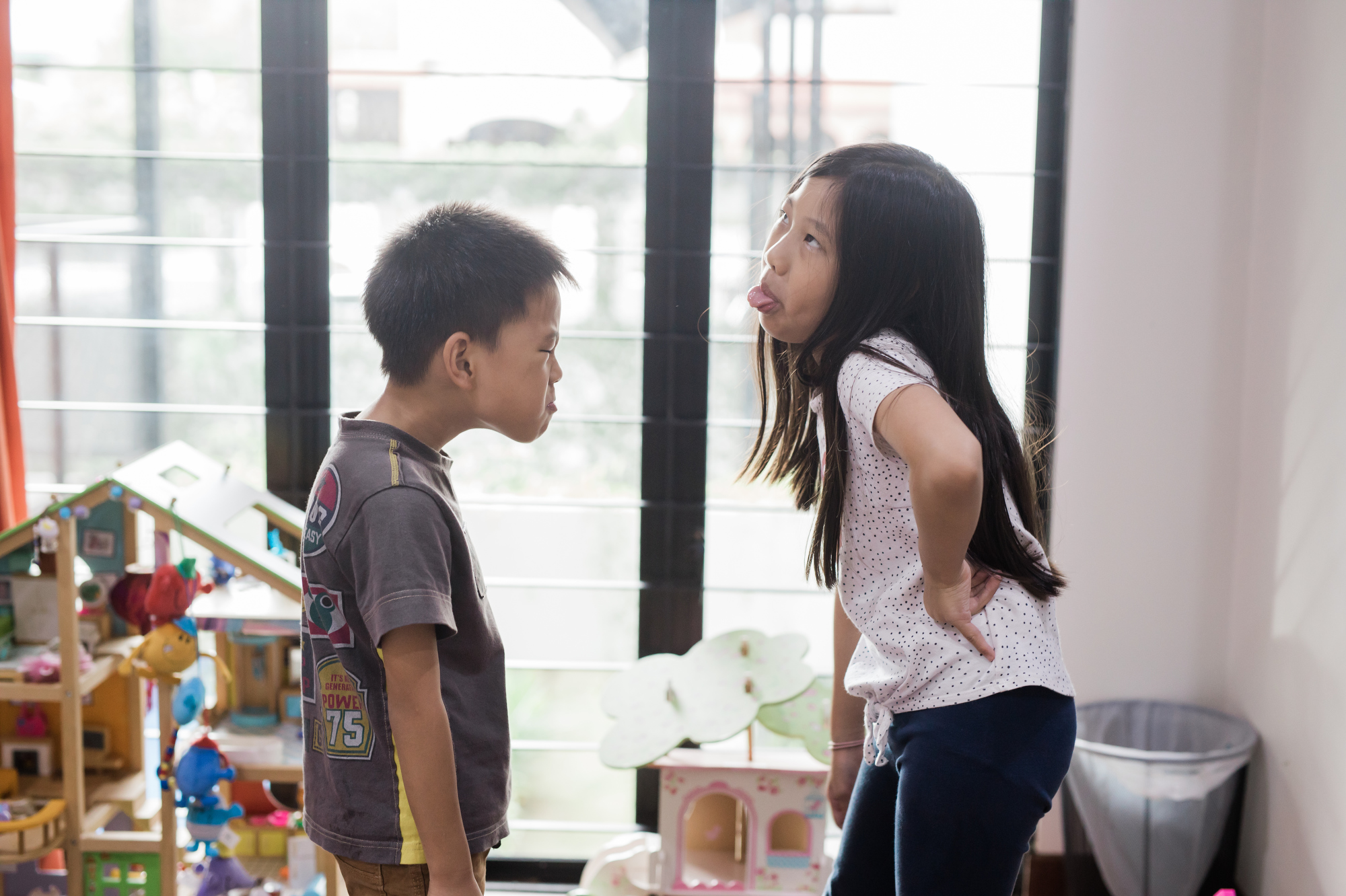So this is the honest truth. The day I sat down to write an article on sibling rivalry was the day I had to put all my theory into practice.
I was on a work zoom call when my kids sauntered into the room, telling me it was time for shower. I motioned for them to go ahead, all the while maintaining eye contact with my client online. Soon, out of the corner of my eye, a fight broke out between the two kids. It soon escalated to shouting, crying and physical punches. All the while, I was on mute, trying hard to focus while worrying if my facial expression truly showed what I was feeling at that point in time – true annoyance.
In between cries, I unmuted myself and asked politely if I could deal with my kids for a short while. Off camera, I was giving the death stare, and with the most restraint I could muster, said, “Stop fighting!! Can’t you see I am on a call!?”
It obviously didn’t work because within 5 minutes, I was pulling my son out of the room, in my desperate attempt to separate the kids physically. That gave me a moment of peace to end my call in between my daughter’s sobs.
After the call ended, I was furious. I was quick to tell them how annoyed I was at them. My brain quickly recalled all the content I had read in Adele Faber & Elaine Mazlish’s book “How to Talk – Siblings Without Rivalry”. In the heat of the moment, I came up with a blank. I realised that when I am triggered emotionally, I just react, and usually negative emotions just feeds off other negative emotions.
Reacting emotionally caused me to spew threats to my kids. I tried to ‘interrogate’ them about what was going on, but they just clammed up, and that made me even more annoyed. In my frustration, I said that I would discipline both of them – I didn’t care at that point in time who was at fault, both would get a smack with the rotan later.
After we all cooled down, I paused to reflect on my actions. There’s an obvious lesson here that I needed to learn. When kids are fighting, and I am angry, I just can’t calmly acknowledge everyone’s feelings and allow them to sort their own problems (as much I wanted them to).
“Children should have the freedom to resolve their own differences. Children are also entitled to adult intervention when necessary. If one child is being abused by the other, either physically or verbally, we’ve got to step in. But here’s the difference: We intervene, not for the purpose of settling their argument or making a judgment, but to open the blocked channels of communication so that they can go back to dealing with each other.” – How to Talk – Siblings Without Rivalry” (pg 141)
A few hours later, just before bedtime, we had another chat. This time, we’re all a lot calmer. I reminded them of our house ground rules:
- If we’re play-fighting, and someone doesn’t find it fun anymore, it’s time to stop.
- If someone yells “STOP!”, you really need to respect that and stop.
- No hitting, pinching, punching or any sort of physical fight is allowed.
I then gave them an opportunity to express how they felt. At the back of my mind, I knew I had to address my rotan threat earlier. The kids were terrified and deep down, I didn’t actually want to use it either. But words said couldn’t really be taken back. They still needed to bear the consequences of their earlier actions. So I asked them what would be the appropriate consequence… to which, they excitedly replied, “We’ll sacrifice our screen time.” I know it’s a big thing for them (but they would rather sacrifice this than get disciplined with the rotan).
The night ended with the kids volunteering to say sorry to each other and to me. It was a good closure.
“We are searching for ways to increase good feelings between our children. For ways to make fighting less likely. What eases the tension, what makes harmony possible, is the attitude of ‘Who needs what?… Who feels what?…What solutions can be worked out that take everyone’s feelings and needs into account?” – How to Talk – Siblings Without Rivalry” (pg 155-156)
When The Children Can’t Work Out A Problem By Themselves
- Call a meeting of the antagonists. Explain the purpose and the ground rules.
- Write down each child’s feelings and concerns, and read them aloud.
- Allow time for rebuttal.
- Invite everyone to come up with solutions. Write down all ideas without evaluating.
- Decide upon the solutions you all can live with.
(Taken from Pg 157, How to Talk – Siblings Without Rivalry by Adele Faber & Elaine Mazlish.)




